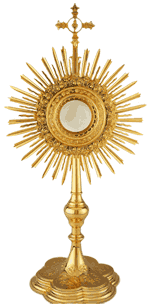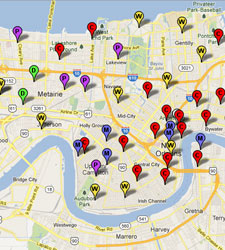Jesus said to them, “Did you never read in the Scriptures: The stone that the builders rejected has become the cornerstone; by the Lord has this been done, and it is wonderful in our eyes?” (Mt. 21:42)
In the Gospel this Sunday, Jesus quotes part of Psalm 118 about the stone rejected by the builder becoming the cornerstone. This passage was understood even by the early Church as a prophecy of His Resurrection from the dead. But – as I learned on a trip to the Holy Land a number of years ago – there’s another interesting, more literal meaning to the passage. The Temple in Jerusalem is built using huge stones that were quarried from an area close to the city. Some of these stones are as big as school buses and can still be seen in the “wailing wall.” Once the temple was done, the quarry was abandoned, and what was left was a garden with a large outcropping of rock that had been “rejected by the builders” because it contained a large fissure through it that made it unsuitable for the temple. Over time, the area around this rejected stone grew into a garden. And near the garden, grew a small cemetery, since it was outside the walls of Jerusalem and burials could not be done in the city.
Now flash forward 500 years. Jesus is teaching in the temple, and He tells this parable about the vineyard, the murdered son and the “stone rejected by the builders.” And what happens two days later in Matthew’s Gospel? Jesus – Son of God – is handed over to the Pharisees who deliver him to Pontius Pilate to be killed. He carries His cross out of the city walls, climbs up a rock outcropping and is crucified in a quarry – on Calvary, the stone whose fissure meant it could not be used in building the Temple. It was rejected by the builders and became the cornerstone of our faith as sin was nailed to a tree and Jesus suffered and died, only to rise from a tomb in the nearby cemetery.
The death and resurrection of Jesus Christ is the cornerstone of our faith. Our Lord died and rose, and promised that His faithful followers would do the same. And we can go to Jerusalem today, into the Church of the Holy Sepulchre, and see the stone today. But more importantly, we can participate in that Sacrifice on Calvary by participating in the Sacrifice of the Mass, where we eat the body and drink the blood that fell on that rejected stone 2000 years ago. We share in His death so that we may also share in His Resurrection. Jesus is with us today, as He was then. Pardon me that it’s not Easter, but He is Risen! Alleluia!!
(Very Rev. Msgr.) Christopher H. Nalty
msgr.nalty@gmail.com




